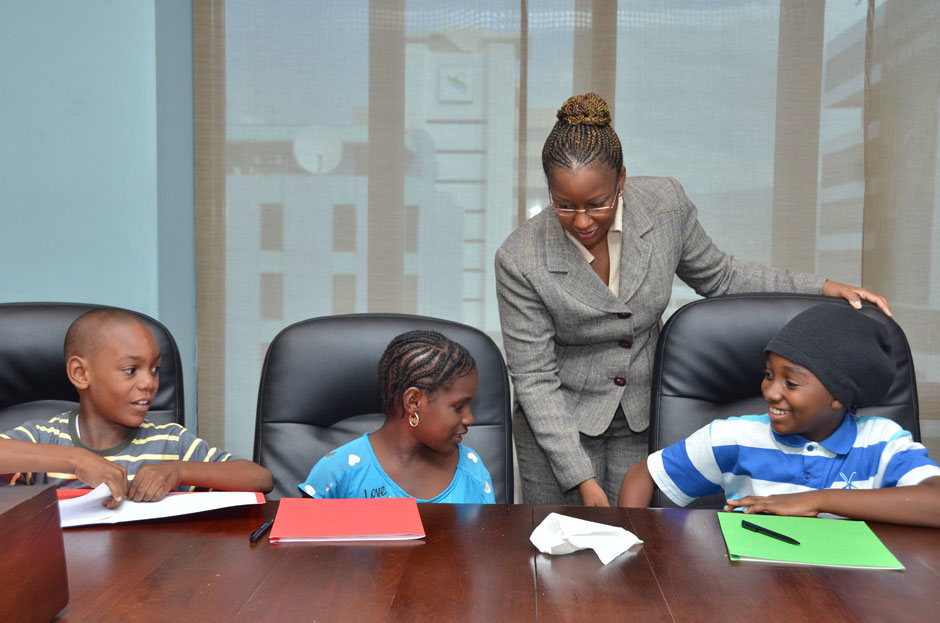BCJ to Assist Schools to Set Up Radio Clubs and Stations
By: , July 22, 2013The Key Point:
The Facts
- The BCJ will assist the students to set up radio stations
- 80 teachers were trained to provide instruction in media literacy in schools
The Full Story
Students from select schools will be establishing radio clubs and radio stations in their institutions, under phase three of the Broadcasting Commission of Jamaica’s (BCJ) Media Literacy Project.
This was disclosed by Assistant Executive Director, BCJ, Karlene Salmon-Johnson, while addressing the opening of the project’s media literacy workshop and radio production programme, at the Commission’s headquarters in New Kingston, on July 22.
Several grade 4 to 6 students of the Balcombe Drive Primary and Junior High and Calabar Primary and Junior High schools are the latest beneficiaries of this phase of the six-year project, which will see them running their own radio productions at school, through their public address (PA) systems.
“We are excited about you setting up these radio clubs at your schools and then later on, we’re going to help you to set up a radio station…You will manage the radio stations and some of you will be on air. Some of you will be behind the scenes, but everybody will be involved,” she explained.
The BCJ will assist the students to set up low power and internet school/community radio stations, where they can make limited over-the-air broadcasts.
“Initially for some of you, it’s going to be internet-based, but we are hoping that down the road, we will be able to set up some low power transmitters in your schools, so that your communities can hear you,” Mrs. Salmon-Johnson said.
Under this final phase of the project, which runs from January to December, the Commission is aiming to embed media and information literacy in the curricula of teachers’ colleges and primary and junior high schools.
The programme is also designed to engage students and teachers in discussions about media and broadcasting as a means of giving them insight into the career possibilities and opportunities in the sector.
“The programme is about training you through your formal school work to educate about how the media works. This radio station project that we are setting up is for you to get an opportunity, hands on, to learn how a radio station really works,” Mrs. Salmon-Johnson told the students.
Over the ensuing weeks, the students will get presentations on speech and delivery; learn how to produce a newscast; and participate in a two-day workshop at the Caribbean Institute of Media and Communication (CARIMAC) of the University of the West Indies (UWI), looking at radio production and equipment.
This will provide them with in-studio experience to familiarise themselves with the audio equipment, the computer set up, the recording console, how to record a clip, how to edit, and how to produce. They will complete the workshop by submitting a two-minute feature that they produce along with their teachers.
Launched in 2007, the Media Literacy Project was conceptualised as a necessary intervention in dealing with problematic content in traditional and new media. It also seeks to address the need to empower Jamaican children, and by extension, the Jamaican society, in making use of media for personal and national development.
The programme involves partnership with the Ministry of Education, the United Nations Educational, Scientific and Cultural Organization (UNESCO), and the Joint Board of Teacher Education (JBTE).
Under the first two phases of the project, a package of four lessons on video, each designed for delivery within a 20-minute class, was developed for grades four to six, which was the original focus of the project.
The videos and other teaching manuals have since been tested by the JBTE in 10 primary schools and select teacher training colleges across the island. Based on the feedback, grades one to three were included in an effort to target children at a younger age.
Additionally, some 80 teachers were trained to provide instruction in media literacy in schools across the island, while 150 grades five to eight students were trained in the operation of radio stations.


